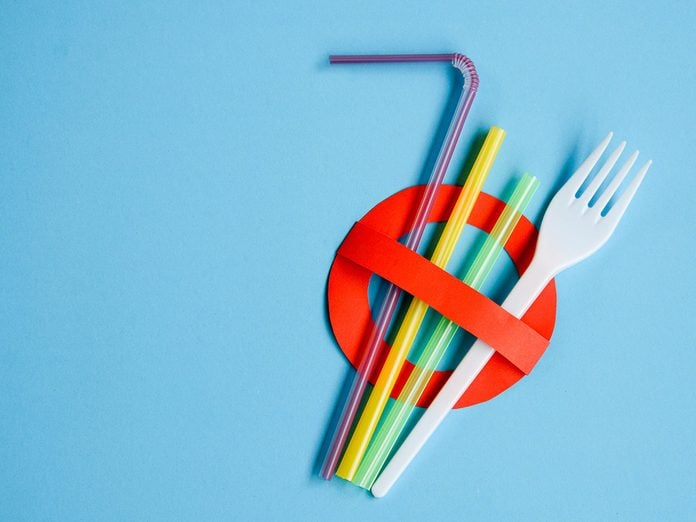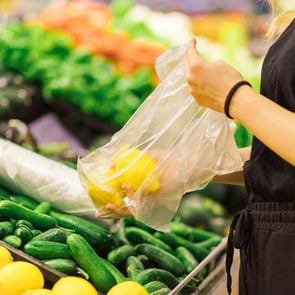What Canada’s Ban on Single-Use Plastics Will Mean For Canadians—and the Environment

Canada's government plans to ban single-use plastics by the end of the year. We asked Robert Kitz, food industry analyst and researcher, about what that means for the average Canadian—and for the environment.
What you need to know about Canada’s ban on single-use plastics
Reader’s Digest Canada: How does a ban on single-use plastics work, and how much will that change our lives?
Robert Kitz: The ban will cover six specific items: plastic straws, grocery bags, stir sticks, six-pack rings, cutlery and takeout containers. These six were selected based on both the damage they cause to the natural environment and whether there’s a readily available alternative. So with straws, for example, there are cardboard options or metal options. The difference the ban will make on your day-to-day life depends on how reliant you are on these items, but largely, these are not direct-to-consumer products, so a lot of the onus will be on businesses.
What types of businesses will be affected the most?
A lot of these changes are going to be felt by the restaurant industry, which has already had a horrible year due to the pandemic. Offering takeout has been their lifeline, so I think there will have to be an effort to minimize the impact on them. Manufacturers of these items will also be affected, and ultimately there will be an impact on consumers, who will absorb some of the new costs.
David Suzuki believes that plastic beverage bottles should have made the list of banned products. Do you agree?
Plastic bottles are something we see a lot of, but they are relatively easy to recycle, which is not the case with the banned items.
The other thing is that, as well as the ban, the government’s play includes moving to a more circular economy. Currently, most plastic goes from manufacturer to consumer to landfill. We take our blue bins to the curb every week, but the reality is that only nine per cent of plastics in Canada get recycled. To improve that, we need to invest in infrastructure.
Are you surprised that the government decided to move forward with the ban now, given we’re still dealing with a pandemic?
This was a Trudeau re-election promise, so I’m not totally surprised. People want to think of COVID-19 as something that will soon be over, but that’s likely not the way it will play out. Also, plastic pollution has only gotten worse during the pandemic. My research shows that, of those we surveyed, 30 per cent are using more since last March: more takeout containers, more grocery delivery and gravitating towards packaged foods that bring a sense of safety.
Is plastic packaging actually safer?
Anything that protects the items you’re buying is going to add some degree of increased safety. At the same time, we’ve learned that surfaces are not as significant as we once thought in terms of virus transmission.
The plastics ban is the first step in the Canadian government’s plan to achieve zero plastic waste by 2030. Is that a realistic target?
I don’t want to be cynical, but I would say that it’s definitely an overly optimistic goal, much like the federal government’s target of being carbon neutral by 2050—particularly since Canada is part of a global supply chain. There’s only so much that we can do on our own as long as we’re importing products that are packaged in plastic.
What can Canadian individuals do to assist the effort?
One thing you can do is reduce your consumption of plastic. You probably have dozens of plastic bags under your sink. Recycling is better than landfills, but from a waste perspective it’s still the second-worst thing.
Next, find out what other countries are doing to tackle the plastic problem.






